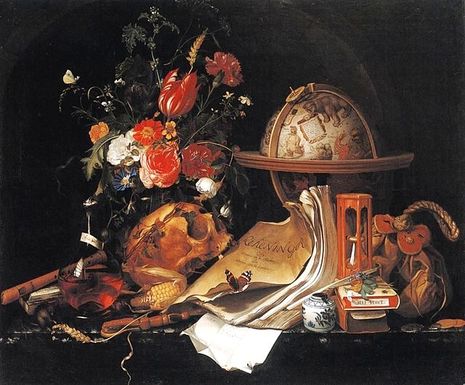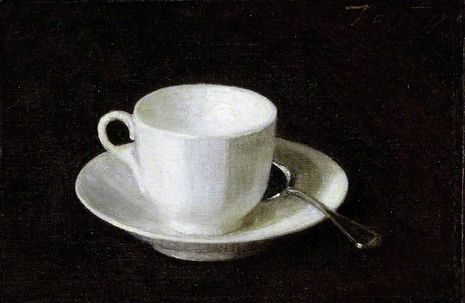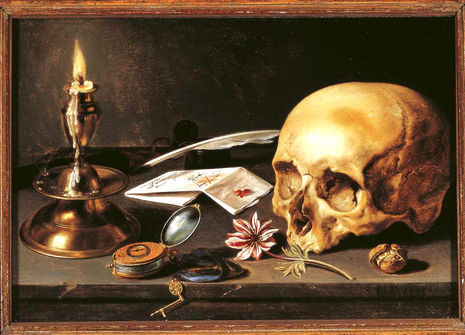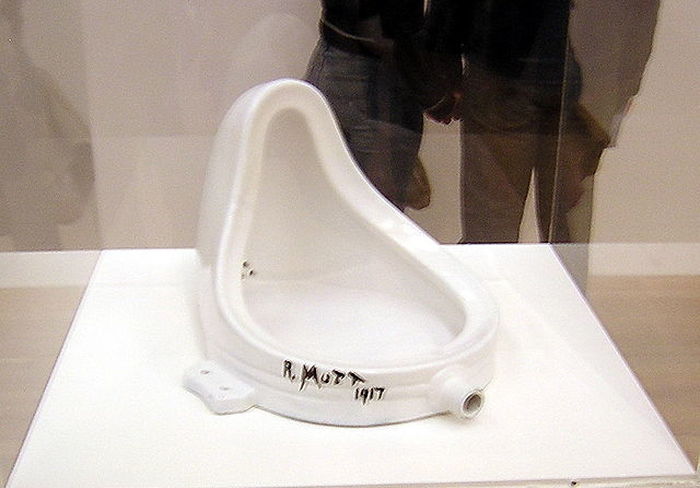The still life genre lives on
Lucy Ansell finds traces of a forgotten art form in college formals and Instagram brunches

The still life painting genre is criminally underrated. It is also undeniably linked to the Cambridge student aesthetic.
Historically regarded as the ‘lowest’ of the painting genres, still life is often treated as an obsolete form. But is this valuation correct? Its depictions of the ‘low’ and association with the ‘feminine’ domestic sphere led academics of the 17th century, such as Andrea Sacchi, to regard it as unsophisticated. Much to my joy, this valuation has not persisted today, with greats such as Picasso and Juan Gris producing many wonderful still lifes. Within the context of the college formals and Instagram dumps, I would like to propose there is nothing shameful about artistically arranging dinner.
When I refer to ‘still life’ I am talking about paintings of dinners, food and flowers. I can appreciate the delicate extravagance of a 17th century Dutch banqueting scene. I find Paul Cézanne’s apples, which almost seem to roll outside of their canvas and into my hands, to be fuzzy, alive, and intimate. And I believe you can too.
“Although it is a literal freeze frame, still life has a great, paradoxical capacity to induce narrative”
As I found myself completing a dissertation on Gertrude Stein’s Tender Buttons (1914), I was introduced to the modernist take on still life. Although it is a literal freeze frame, still life has a great, paradoxical capacity to induce narrative. The conventional tropes of disordered lobsters and demolished cheeses impose the diner’s perspective onto the onlooker, hinting a hungry, imminent return.

After Cézanne had created his apples with dynamic cross-hatchings, the genre of still life became permanently altered. Artists started to paint inanimate objects like they were vibrating or shifting. Virginia Woolf herself took note, writing that Cézanne’s apples “positively got redder & rounder & greener” the more she looked at them and suspected “some very mysterious quality of potation in that picture”. This reanimation of the still allowed artists to explore concerns over what was shifting and what was static. Claudia Tobin notes how this re-animation during the modern period affected “mode[s] of being” as well as a visual genre. It turns out the humble category of still life had a hand in shaping modern poetry, dance and sculpture.
Whenever I visit The Fitzwilliam, I always find myself drawn to Henri Fantin-Latour’s ‘White cup and saucer’ (1864). And spoiler alert! It is just a little white cup and saucer. However, that is exactly what I love about it.

Perhaps spending hours reading Stein’s meditations on random pieces of victuals has biased me, but there is something so perfect yet unassuming about the painting. Still life pictures such as these draw attention to what is easily overlooked, emphasising the beauty to be found in the ordinary and the everyday. In fact, we share still lifes such as this all the time in our termly dumps or on BeReal. No humanities student is innocent from pretentiously glamourising their cup of coffee. Thankfully, we are in an age which supports this agenda, where the domestic sphere and cooking is no longer associated strictly with female housework or frank boredom. It can be good, valued art. By liking my friend’s snapshots, I like to think that the genre of still life encourages us to share intimate and imperfect moments with one another. It foregrounds a contemporary social connectivity.
“It turns out the humble category of still life had a hand in shaping modern poetry, dance and sculpture”
When I think of food culture in Cambridge, I also think of formals. There is certainly a critique to be found by comparing traditional still life to formal dining. The Dutch and Flemish still life paintings from the 1600’s traditionally depicted banquet meals and edible delicacies, to speak of the society’s increasing urbanisation, wealth, and power. And how should we read formals alongside still lifes? Tightly woven into the fabric of the Oxbridge social aesthetic, our formals embody values of tradition, exclusivity and high-table hierarchy. In a research paper, MariaLaura Di Domenico and Nelson Philips found the meals to be symbolic mediums which are “rites of passage and socialisation processes” for college members. It is a strange privilege for Oxbridge students to become so complacent and accustomed to weekly, three course suppers. Yet this practicing for future business dinners is not so bizarre when one remembers that our ancient collegiate university was founded to predominantly educate the bureaucratic elite.
However, flaunting aristocratic values has come out of fashion in still life and might be prophetical for the Cambridge aesthetic. Whilst I do not think formals will be abolished any time soon, perhaps in the future there will be radical changes made to the Oxbridge social ritual. But that would definitely spoil the traces of elitism and tipsy fun of the candlelit dining experience.
I advocate that you should go ahead and post that picture of your formal food or coffee date, to enjoy the art of still life in the student aesthetic.
 Comment / Cambridge is right to scrap its state school target1 May 2024
Comment / Cambridge is right to scrap its state school target1 May 2024 News / Academics call for Cambridge to drop investigation into ‘race realist’ fellow2 May 2024
News / Academics call for Cambridge to drop investigation into ‘race realist’ fellow2 May 2024 News / Gender attainment gap to be excluded from Cambridge access report3 May 2024
News / Gender attainment gap to be excluded from Cambridge access report3 May 2024 News / Cambridge postgrad re-elected as City councillor4 May 2024
News / Cambridge postgrad re-elected as City councillor4 May 2024 Comment / Accepting black people into Cambridge is not an act of discrimination3 May 2024
Comment / Accepting black people into Cambridge is not an act of discrimination3 May 2024





